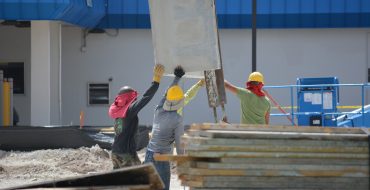 As you conceptualize your new home, one of the major design challenges you’ll encounter is choosing the right kind of siding. Siding plays multiple roles in your home design – it shapes the entire outer appearance of your house, plays a significant role in managing the long-term impact of weather on your home, and replacing it is costly. How can you choose between the many options on the market today and know your siding is eco friendly?
As you conceptualize your new home, one of the major design challenges you’ll encounter is choosing the right kind of siding. Siding plays multiple roles in your home design – it shapes the entire outer appearance of your house, plays a significant role in managing the long-term impact of weather on your home, and replacing it is costly. How can you choose between the many options on the market today and know your siding is eco friendly?
One way to narrow your home siding search is by focusing on eco friendly options. In this case, fiber cement siding will be your leading home siding contender. Built to last under any circumstances, fiber cement siding is a revolutionary material. Here’s what you should know about this sustainable siding choice.
ECO FRIENDLY SIDING ADVANTAGES
 Although fiber cement siding is not a natural material, it has a number of advantages over renewable resources like wood. With rapid deforestation being a major environmental issue, wood siding can fuel unsustainable forestry practices. The material also avoids the fossil fuel consumption involved in creating vinyl siding.
Although fiber cement siding is not a natural material, it has a number of advantages over renewable resources like wood. With rapid deforestation being a major environmental issue, wood siding can fuel unsustainable forestry practices. The material also avoids the fossil fuel consumption involved in creating vinyl siding.
There aren’t yet recycling programs for fiber cement siding, but because of its long life and durability, this siding material is actually far less likely to end up in the landfill than other kinds of siding. When vinyl siding is stripped from a home after a few years of wear and tear, it immediately heads to the trash, but fiber cement siding will remain in use for many years.
SUSTAINABLE SIDING
 Fiber cement siding is a great choice for any home because of it’s long lifespan and overall strength. The material doesn’t rot like some traditional wood siding options because fiber cement siding is able to stand up to rain, snow, and humidity, making it the perfect choice for hot and humid climates. Fiber cement siding is also less prone to cracking and warping in cold, icy areas. No matter where you live, fiber cement siding will enclose your home in strength.
Fiber cement siding is a great choice for any home because of it’s long lifespan and overall strength. The material doesn’t rot like some traditional wood siding options because fiber cement siding is able to stand up to rain, snow, and humidity, making it the perfect choice for hot and humid climates. Fiber cement siding is also less prone to cracking and warping in cold, icy areas. No matter where you live, fiber cement siding will enclose your home in strength.
What’s more, fiber cement siding is also pest resistant. Termites can’t eat through the material because it contains a large proportion of cement and sand – not a popular snack with these pests. And with less cracking and rotting, fiber cement siding also keeps roaches, spiders, and other pests out. No holes in your siding means no bugs in your house.
Bird beaks can’t make impressions in fiber cement siding, while they can easily crack vinyl and scratch up traditional cedar planks. As an exterior material, siding attracts birds, small rodents, and bugs, but fiber cement siding won’t yield to their incursions. Where traditional siding might break down in the face of these assaults, fiber cement siding will stand the test of time.
Another strength of fiber cement siding is that the material is fire resistant. This is a major safety bonus. Even if you choose a fiber cement siding style that looks like traditional wood, you won’t have to worry about the possibility of a stray spark setting your home ablaze.
With fiber cement, you can get the look of wood without the accompanying dangers and avoid the risk of melting associated with vinyl siding. Vinyl siding, one of the most commonly used siding types, can barely handle the heat of midday sun, let alone fire. If you put your barbecue too close to a home with vinyl siding, you can destroy the material, but fiber cement siding has shown only minimal area scorching in fire testing.

 One thing that homeowners love about their fiber cement siding is that it requires far less maintenance than most other siding types. Since it tends not to fly off in the wind or suffer other kinds of structural damage, fiber cement siding can
One thing that homeowners love about their fiber cement siding is that it requires far less maintenance than most other siding types. Since it tends not to fly off in the wind or suffer other kinds of structural damage, fiber cement siding can